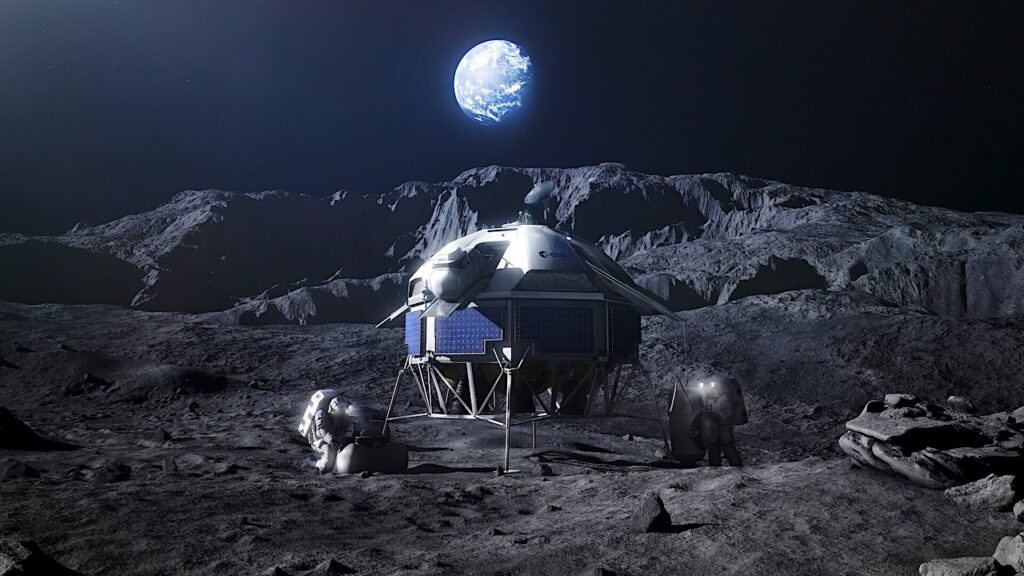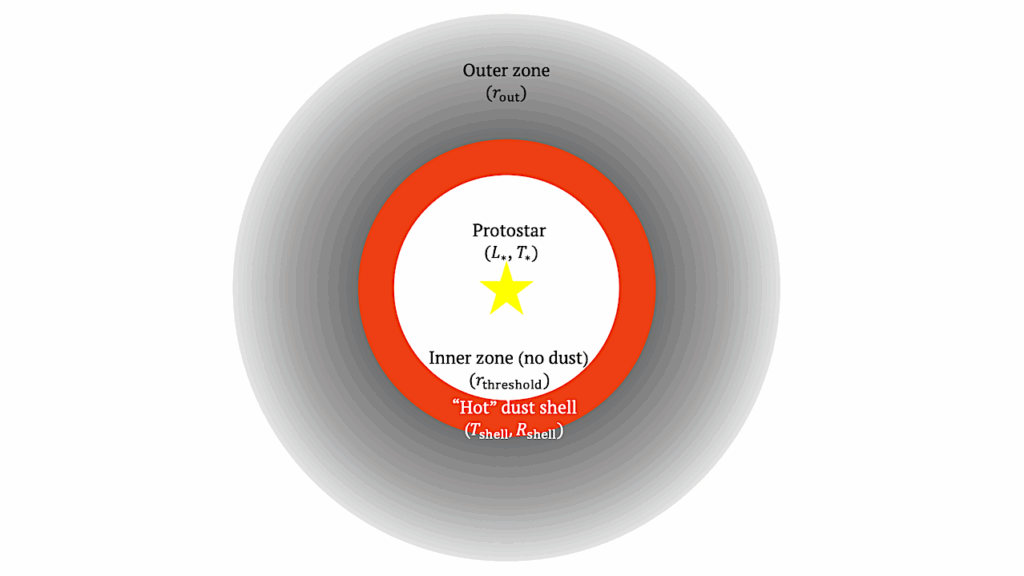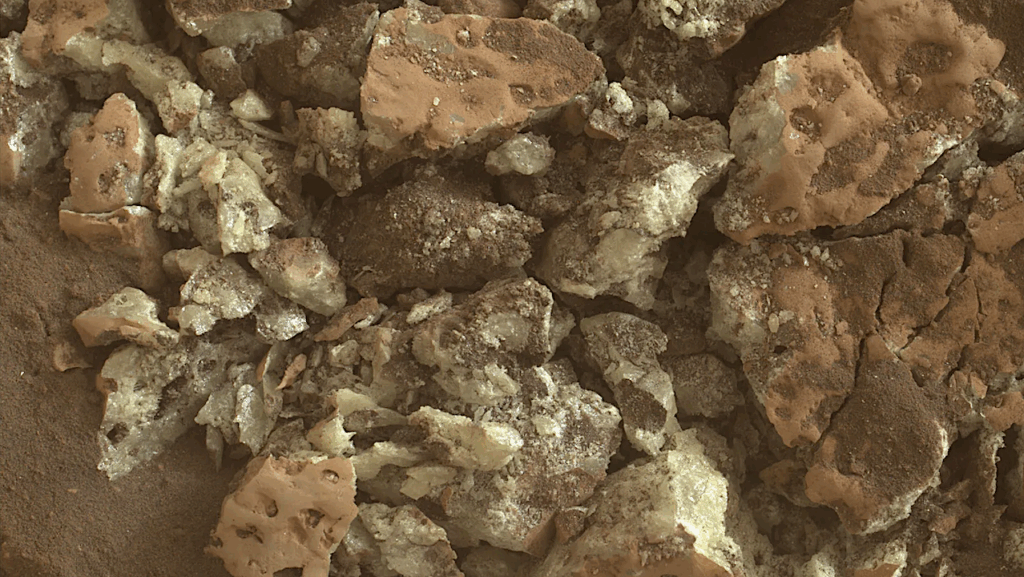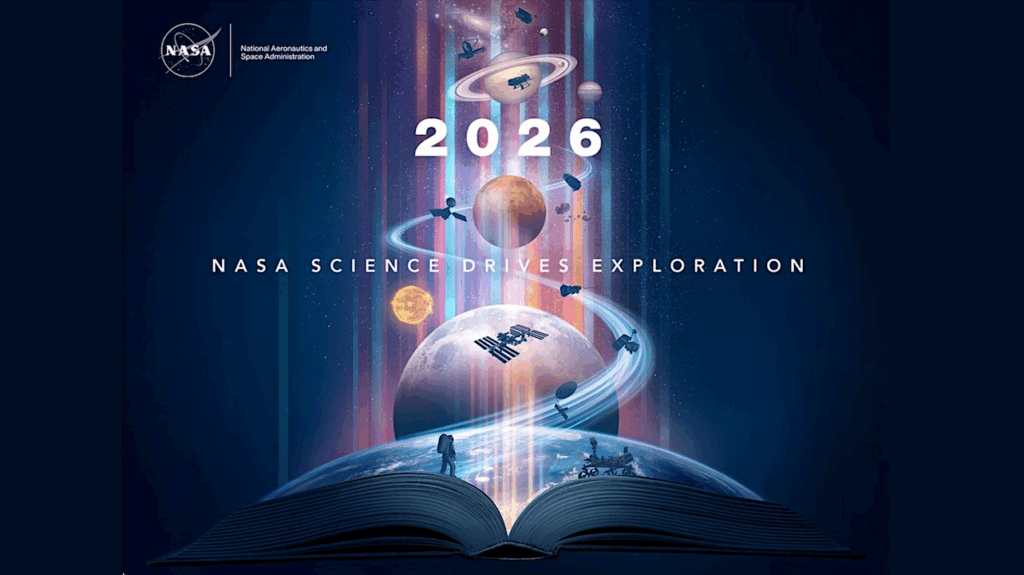Transmission Spectroscopy of the Habitable Zone Exoplanet LHS 1140 b with JWST/NIRISS
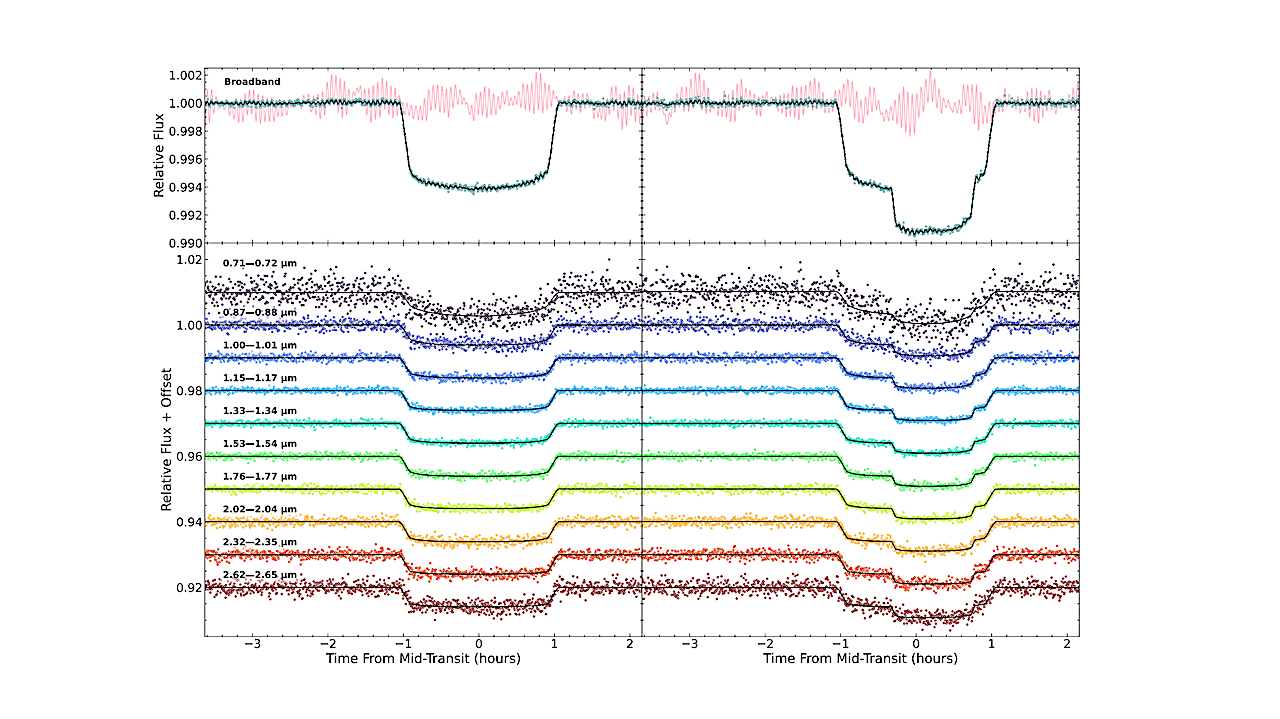
LHS 1140 b is the second-closest temperate transiting planet to the Earth with an equilibrium temperature low enough to support surface liquid water.
At 1.730±0.025 R⊕, LHS 1140 b falls within the radius valley separating H2-rich mini-Neptunes from rocky super-Earths. Recent mass and radius revisions indicate a bulk density significantly lower than expected for an Earth-like rocky interior, suggesting that LHS 1140 b could either be a mini-Neptune with a small envelope of hydrogen (∼0.1% by mass) or a water world (9–19% water by mass).
Atmospheric characterization through transmission spectroscopy can readily discern between these two scenarios. Here, we present two JWST/NIRISS transit observations of LHS 1140 b, one of which captures a serendipitous transit of LHS 1140 c. The combined transmission spectrum of LHS 1140 b shows a telltale spectral signature of unocculted faculae (5.8 σ), covering ∼20% of the visible stellar surface. Besides faculae, our spectral retrieval analysis reveals tentative evidence of residual spectral features, best-fit by Rayleigh scattering from an N2-dominated atmosphere (2.3 σ), irrespective of the consideration of atmospheric hazes.
We also show through Global Climate Models (GCM) that H2-rich atmospheres of various compositions (100×, 300×, 1000×solar metallicity) are ruled out to >10 σ. The GCM calculations predict that water clouds form below the transit photosphere, limiting their impact on transmission data. Our observations suggest that LHS 1140 b is either airless or, more likely, surrounded by an atmosphere with a high mean molecular weight. Our tentative evidence of an N2-rich atmosphere provides strong motivation for future transmission spectroscopy observations of LHS 1140 b.

Stellar contamination-corrected combined spectrum of LHS 1140 b using the best-fit solution of Figure 2. The black points are binned to R ∼ 20 while the gray points are at a higher R ∼ 100. Dashed lines depict GCM-based forward models for mini-Neptune atmosphere (100×, 300×, 1000×solar metallicity) and solid lines the water world GCMs of Cadieux et al. (2024) for an Earth-like atmosphere (1 bar N2, 400 ppm CO2) and a pure CO2 atmosphere at 5 bar. An H2-rich atmosphere for LHS 1140 b is formally rejected (>10σ) by the NIRISS/SOSS data. A flat solution (e.g., water world or airless planet) provides a significantly better fit but the reduced χ — astro-ph.EP 2 of 1.75 may indicate an underestimation of error bars, an imperfect TLS correction, or the presence of residual spectral features (e.g., slope). An apparent linear trend with a slope of approximately 40 ppm across the NIRISS domain (dotted green line) improve the fit (χ 2 ν = 1.72), but is not predicted by our GCMs. — astro-ph.EP

Escape velocity–instellation diagram of small exoplanets (Rp < 1.8 R⊕). The empirical “cosmic shoreline” (S ∝v4 esc) of Zahnle & Catling (2017) based on Solar System bodies is depicted in orange with an arbitrary envelope to underscore uncertainty with spectral types. The size of data points scale with their Transmission and Emission Spectroscopy Metrics (Kempton et al. 2018) to highlight favorable targets for JWST atmospheric characterization. Targets with S < 10 S⊕ or with TSM/ESM above 90th percentile are annotated. The TRAPPIST-1 system is abbreviated as “T-1”. The optimistic habitable zone (Early Mars/Recent Venus) defined by Kopparapu et al. (2013) is shown in green (approximated for a range of spectral types). With a relatively high escape velocity and low instellation, LHS 1140 b likely retained an atmosphere. — astro-ph.EP
Charles Cadieux, René Doyon, Ryan J. MacDonald, Martin Turbet, Étienne Artigau, Olivia Lim, Michael Radica, Thomas J. Fauchez, Salma Salhi, Lisa Dang, Loïc Albert, Louis-Philippe Coulombe, Nicolas B. Cowan, David Lafrenière, Alexandrine L’Heureux, Caroline Piaulet, Björn Benneke, Ryan Cloutier, Benjamin Charnay, Neil J. Cook, Marylou Fournier-Tondreau, Mykhaylo Plotnykov, Diana Valencia
Comments: 26 pages, 14 figures, 3 tables, accepted for publication in ApJL
Subjects: Earth and Planetary Astrophysics (astro-ph.EP)
Cite as: arXiv:2406.15136 [astro-ph.EP] (or arXiv:2406.15136v1 [astro-ph.EP] for this version)
Submission history
From: Charles Cadieux
[v1] Fri, 21 Jun 2024 13:34:19 UTC (7,988 KB)
https://arxiv.org/abs/2406.15136
Astrobiology, Astronomy,




